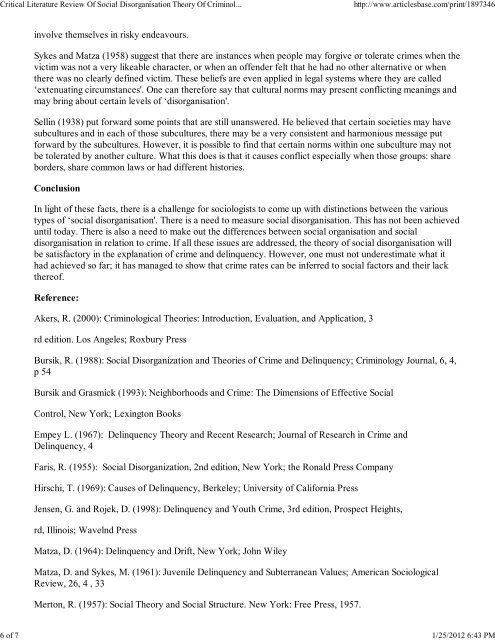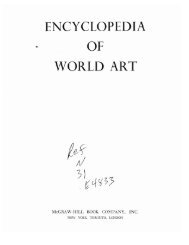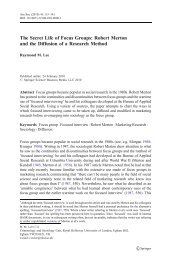Critical Literature Review Of Social Disorganisation Theory Of ...
Critical Literature Review Of Social Disorganisation Theory Of ...
Critical Literature Review Of Social Disorganisation Theory Of ...
You also want an ePaper? Increase the reach of your titles
YUMPU automatically turns print PDFs into web optimized ePapers that Google loves.
<strong>Critical</strong> <strong>Literature</strong> <strong>Review</strong> <strong>Of</strong> <strong>Social</strong> <strong>Disorganisation</strong> <strong>Theory</strong> <strong>Of</strong> Criminol...http://www.articlesbase.com/print/18973466 of 7 1/25/2012 6:43 PMinvolve themselves in risky endeavours.Sykes and Matza (1958) suggest that there are instances when people may forgive or tolerate crimes when thevictim was not a very likeable character, or when an offender felt that he had no other alternative or whenthere was no clearly defined victim. These beliefs are even applied in legal systems where they are called‘extenuating circumstances'. One can therefore say that cultural norms may present conflicting meanings andmay bring about certain levels of ‘disorganisation'.Sellin (1938) put forward some points that are still unanswered. He believed that certain societies may havesubcultures and in each of those subcultures, there may be a very consistent and harmonious message putforward by the subcultures. However, it is possible to find that certain norms within one subculture may notbe tolerated by another culture. What this does is that it causes conflict especially when those groups: shareborders, share common laws or had different histories.ConclusionIn light of these facts, there is a challenge for sociologists to come up with distinctions between the varioustypes of ‘social disorganisation'. There is a need to measure social disorganisation. This has not been achieveduntil today. There is also a need to make out the differences between social organisation and socialdisorganisation in relation to crime. If all these issues are addressed, the theory of social disorganisation willbe satisfactory in the explanation of crime and delinquency. However, one must not underestimate what ithad achieved so far; it has managed to show that crime rates can be inferred to social factors and their lackthereof.Reference:Akers, R. (2000): Criminological Theories: Introduction, Evaluation, and Application, 3rd edition. Los Angeles; Roxbury PressBursik, R. (1988): <strong>Social</strong> Disorganization and Theories of Crime and Delinquency; Criminology Journal, 6, 4,p 54Bursik and Grasmick (1993): Neighborhoods and Crime: The Dimensions of Effective <strong>Social</strong>Control, New York; Lexington BooksEmpey L. (1967): Delinquency <strong>Theory</strong> and Recent Research; Journal of Research in Crime andDelinquency, 4Faris, R. (1955): <strong>Social</strong> Disorganization, 2nd edition, New York; the Ronald Press CompanyHirschi, T. (1969): Causes of Delinquency, Berkeley; University of California PressJensen, G. and Rojek, D. (1998): Delinquency and Youth Crime, 3rd edition, Prospect Heights,rd, Illinois; Wavelnd PressMatza, D. (1964): Delinquency and Drift, New York; John WileyMatza, D. and Sykes, M. (1961): Juvenile Delinquency and Subterranean Values; American Sociological<strong>Review</strong>, 26, 4 , 33Merton, R. (1957): <strong>Social</strong> <strong>Theory</strong> and <strong>Social</strong> Structure. New York: Free Press, 1957.




